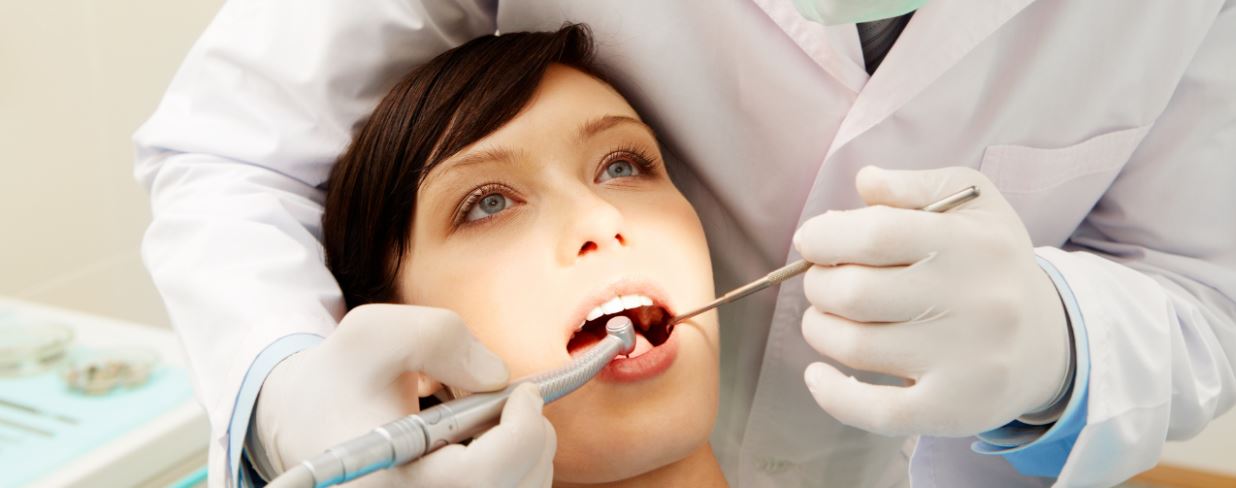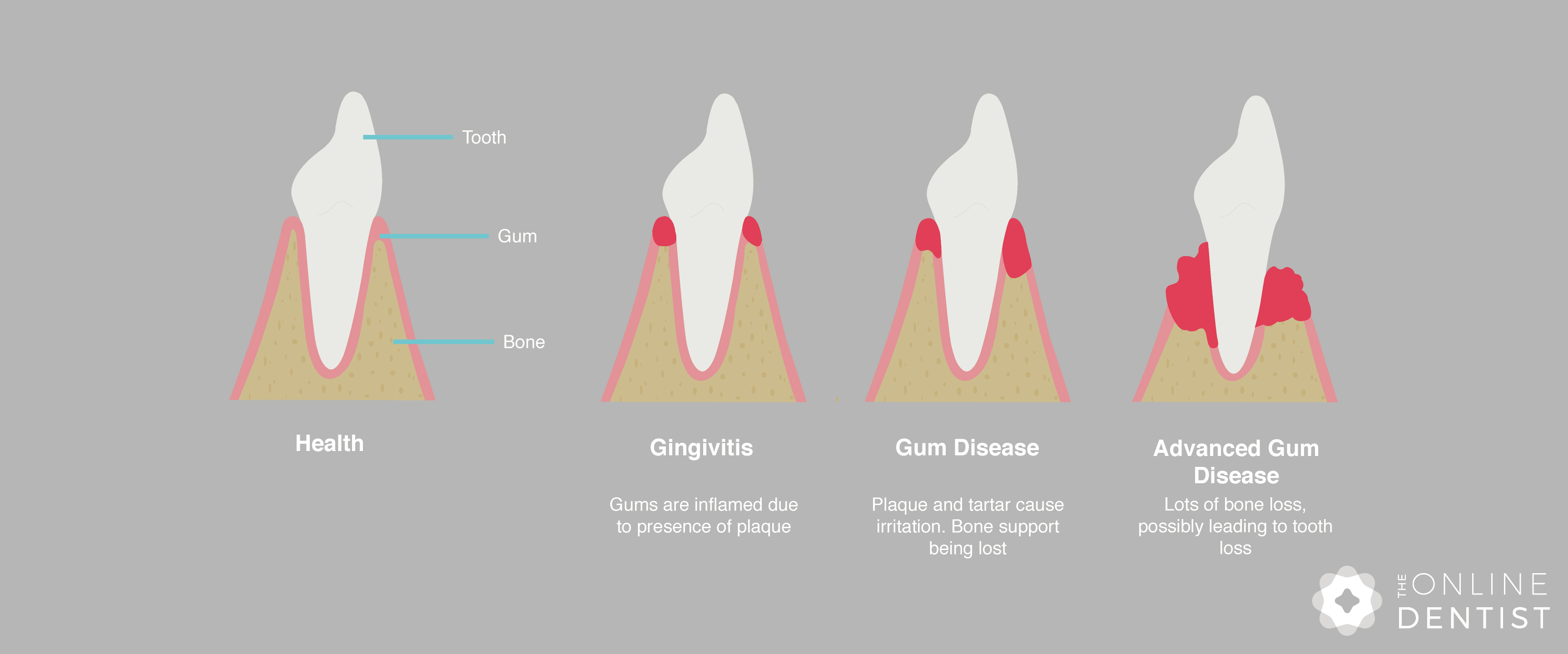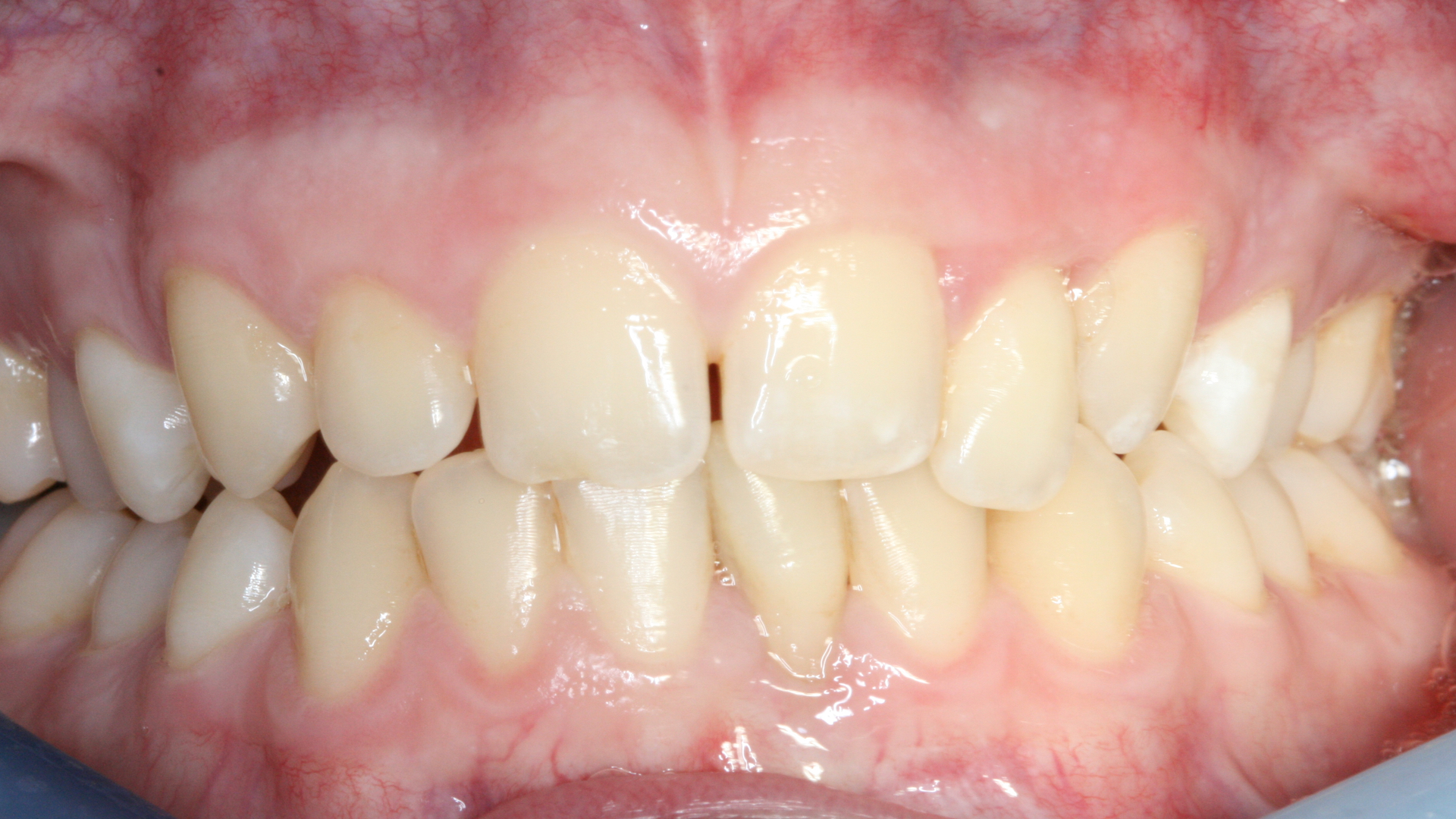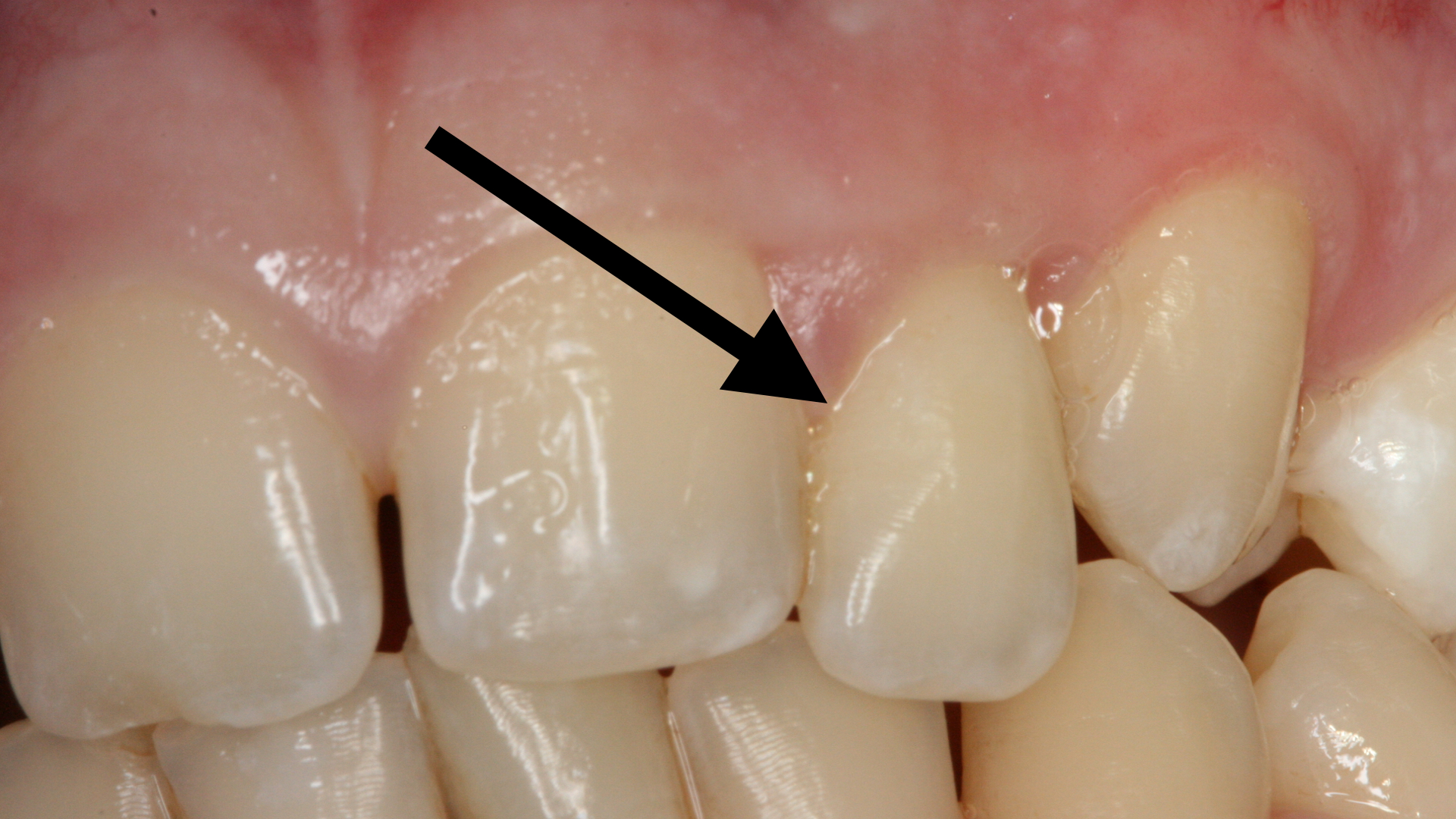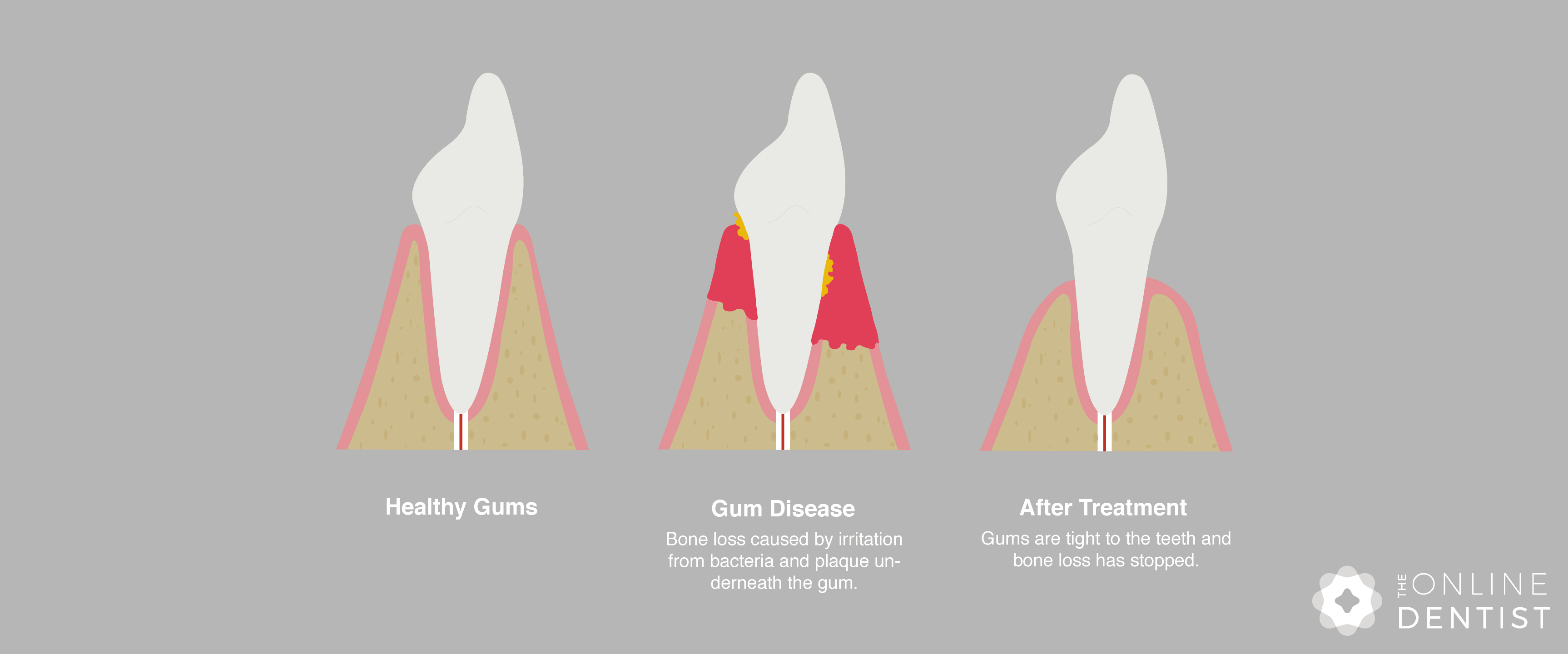Aggressive gum disease is a type of gum disease that progresses particularly quickly. It can cause rapid bone loss around your teeth which may ultimately lead to tooth loss. This is different from the more common form of gum disease that slowly damages the support around your teeth because aggressive gum disease is when the bone support around teeth is lost rapidly.
Aggressive gum disease, also known as ‘aggressive periodontitis’ is a form of gum disease that can start at any age. This includes children and teenagers.
It comes in two forms; ‘Localised’ and ‘generalised’.
Localised means that it only affects a few teeth. These are usually the front, incisor teeth and the first molar teeth. The bone can appear to have almost fallen away around these teeth when viewed on an x-ray.
Generalised means that most teeth are affected. Again, x-rays can reveal that the bone around the teeth has rapidly disappeared. The support around teeth is being irreversibly damaged and lost.
How ‘aggressive’ is ‘aggressive’?
This depends on each individual. It can be extremely aggressive when you consider how much of the support around your teeth can be lost. In some cases, people lose 75% of the bone around their teeth within 5 years.
Sometimes, the disease can go into a dormant stage for years where nothing happens. However, it may still flare up again in future.
What causes this disease?
It’s plaque. Plaque is a soft build up of bacteria. Plaque is what we are trying to remove when we brush our teeth.
It’s slightly different from the more common form of gum disease because there is an exaggerated response to plaque by the body’s immune system. Plaque and bacteria initiate the disease but it’s the immune system going into overdrive that causes the damage.
Ultimately though, it is plaque and bacteria that start the disease.
Is it in my genes?
Yes, evidence shows that some people are more likely to develop aggressive gum disease than others. Patients are often medically healthy and so it is their genes that make them more likely to have this disease. That’s why it can run in families.
Diagnosis
Spotting aggressive gum disease early can be very difficult. In its early stages, patients with aggressive gum disease may appear to have healthy gums.
When the disease is more advanced, patients can present with bleeding gums and teeth that are moving. The photos below are of a patient who’s front tooth has started to drift. Aggressive gum disease had damaged the support around this tooth, allowing it to drop. The patient was 11 years old.
Children as young as 7 years old can be screened during their routine checkups for any periodontal disease, and treated or referred accordingly. If a young person is diagnosed with aggressive gum disease, any siblings must be checked as well. Aggressive gum disease can run in families.
This is partly why regular dental checks with a dentist are so important, especially for children.
Treatment
Firstly, you need to remove the risk factors that cause the disease; these are plaque and smoking. If a patient is a smoker or does not keep their teeth clean, the disease will progress and advance. Even the slightest amount of plaque might exacerbate the reaction of the immune system. This leads to inflammation and bone loss.
So the patient must take control of their dental hygiene and keep their teeth spotlessly clean.
Treatment with a dentist is similar to the treatment of the more common form of gum disease. This involves deep cleaning to remove bacteria from below the gums.
Gum Disease Treatment Diagram
Sometimes, surgical procedures can be carried out to help patients get better access to areas that are tricky to clean. Sometimes, grafting can be carried out to reconstruct areas of bone loss. This depends on the individual patient and is not always possible.
Maintenance
Once the patient has achieved a stable and healthy mouth, it is crucial that this is maintained. It is important to understand that aggressive gum disease does not go away. If we skip this maintenance step, there is a high chance that the aggressive gum disease will return.
Patients with aggressive gum disease must be seen by a dental profession at least 3-4 times per year to assess their brushing and assess their gum health.
If we monitor closely, we can catch any relapse and prevent further bone loss.
Why are we telling you this?
If you lose the bone support around your teeth, you may lose the teeth themselves.
Aggressive gum disease is an example of a dental disease that may be undermining the health of your mouth without you even knowing.
There are two things that are key here…
Firstly, the importance of caring for your teeth.
Bacteria are the ultimate cause of this disease. If you keep them off your teeth, you are doing all you can to protect the health of your mouth.
And secondly, the importance of having regular dental checks with a dentist. Aggressive gum disease is hard to diagnose early but a check up gives your dentist a chance to screen your gums and catch the early warning signs.
Zainab Malaki is a Consultant specialist periodontist (gum specialist) with a huge wealth of experience. That’s why we asked her to tell you all you may need to know about this disease.
Keep updated with the Online Dentist newslettersign up today
Recent Articles
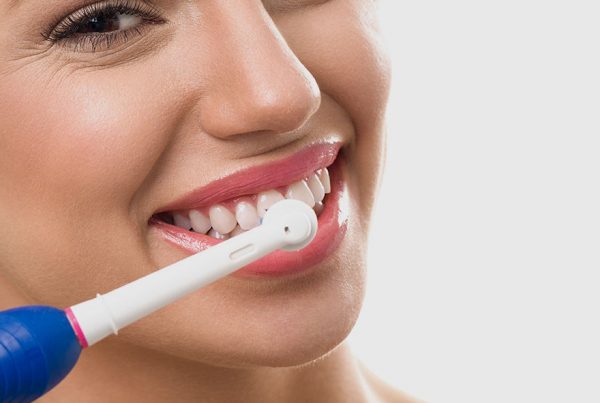 Tooth brushing is the best way we have to remove bacteria from our mouths. The majority of problems with your teeth are caused by bacteria. Bacteria making holes. Bacteria damaging...
Tooth brushing is the best way we have to remove bacteria from our mouths. The majority of problems with your teeth are caused by bacteria. Bacteria making holes. Bacteria damaging...
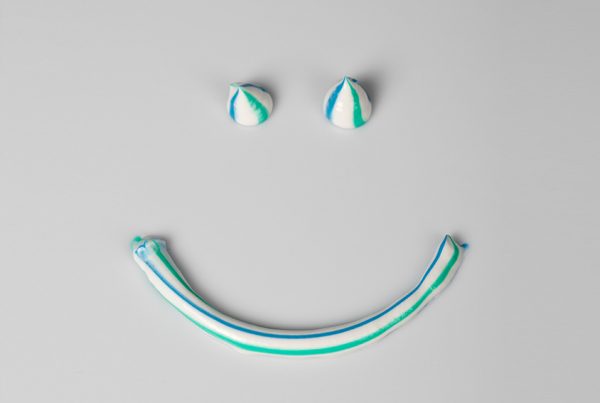 This article is all about toothpaste, what should be in it and why you should use it when brushing your teeth. Forgive me but I'm going to start out with...
This article is all about toothpaste, what should be in it and why you should use it when brushing your teeth. Forgive me but I'm going to start out with...

